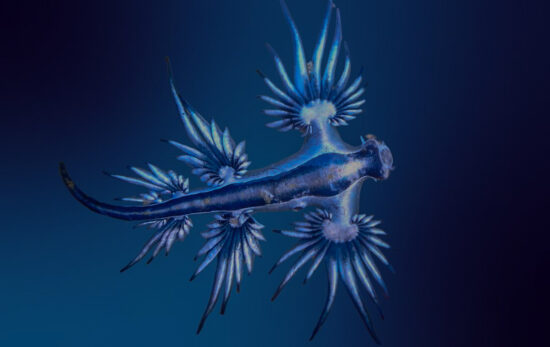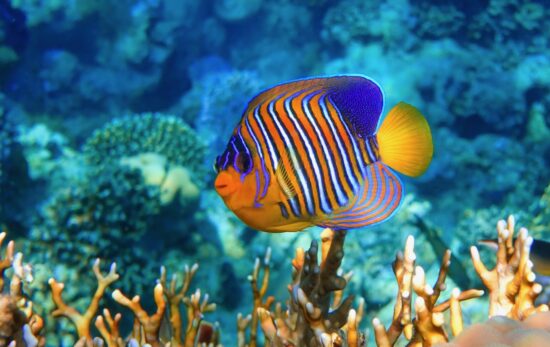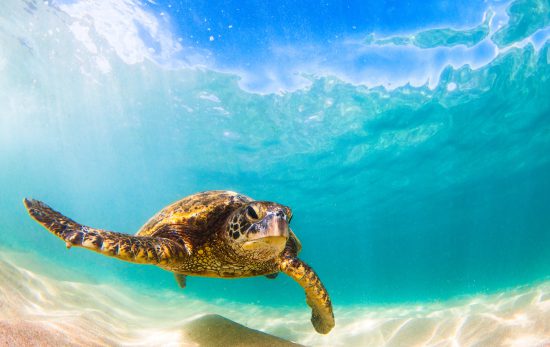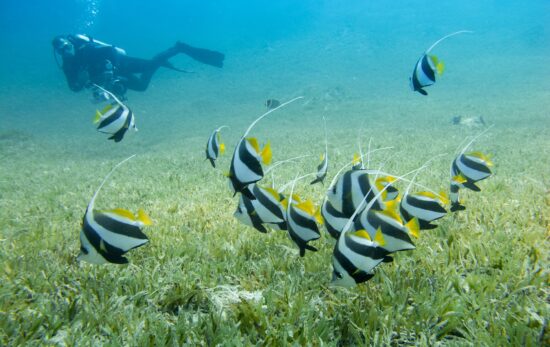The underwater world is filled with fascinating — and sometimes unexpected — relationships between marine life. One such relationship is called mutualism, in which two animals work together in a way that benefits both parties. The best mutualism examples showcase animals interacting with each other to share the benefits, meaning that both don’t just survive, they thrive.
In this article, we’ll explore some of the most remarkable mutualism examples you can find in the ocean. But before we dive in, let’s take a closer look at what defines a symbiotic relationship and how mutualism differs from the other main types of symbiotic relationship: parasitism and commensalism.
What Is a Symbiotic Relationship?
Symbiotic relationships are defined by the long-term interaction between two different species — with at least one party benefiting. These are three of the most commonly recognized types of symbiotic relationships:
- Mutualism – As the name suggests, this type of relationship means both animals benefit.
Example: Sea anemones and clownfish - Parasitism – In Parasitism, one species benefits at the expense of the second.
Example: Cymothoid isopods and numerous fish species - Commensalism – Commensalism is defined by one species benefiting at no cost or reward to the other.
Example: Barnacles and humpback whales
Now we’ve got our definitions in place, keep reading to discover some examples of mutualism to look out for on your next underwater adventure.
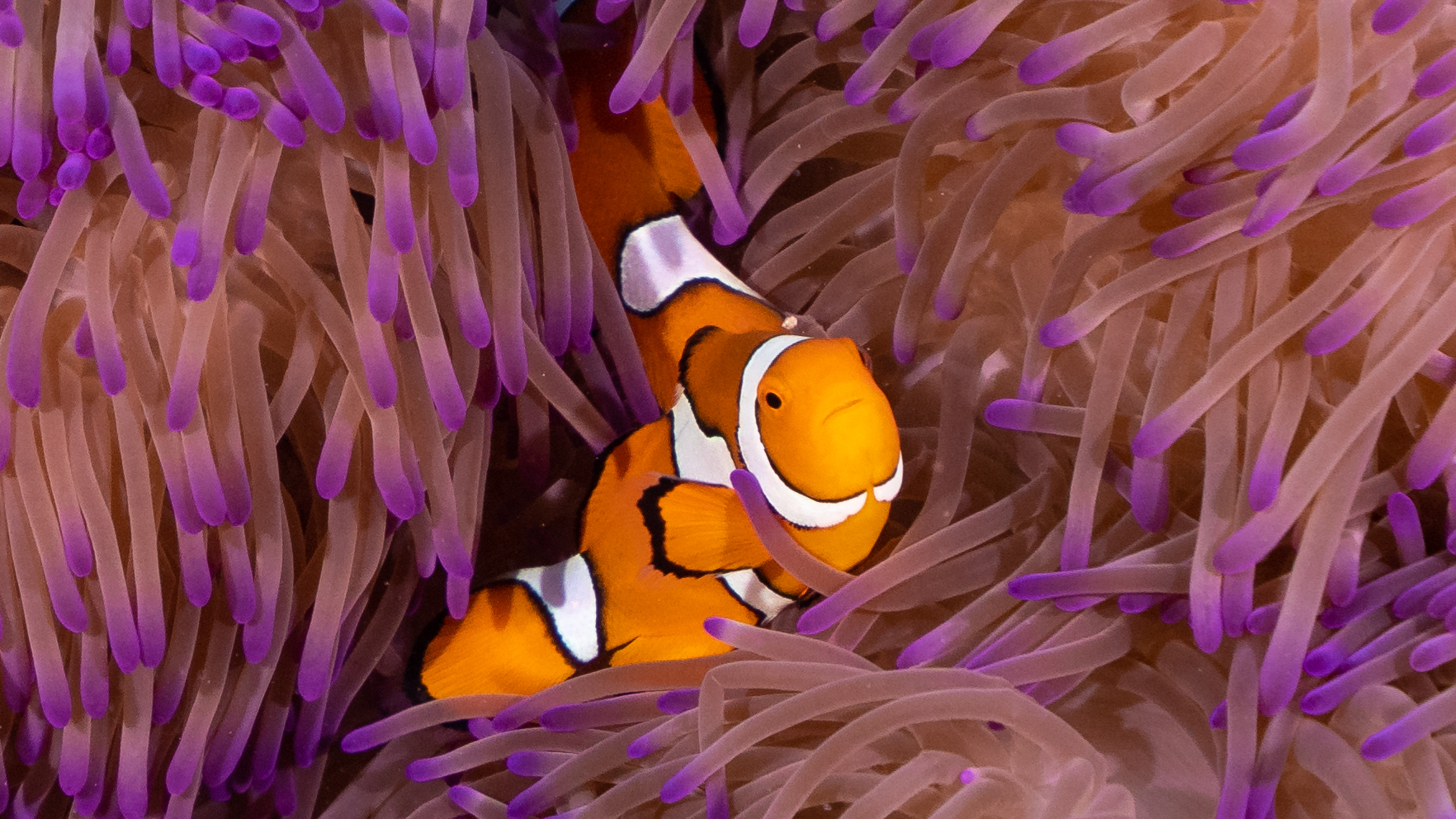
1. Sea Anemones and Clownfish
The relationship between clownfish and sea anemones is arguably the most famous of all the mutualism examples in the ocean, largely due to the 2003 Disney movie Finding Nemo. Clownfish, also known as “Nemo fish,” benefit from this partnership as the sea anemone and its stinging tentacles provide shelter, protection, and a food source. In return, the sea anemone gains a parasite-removal service and nutrients from the clownfish’s waste.

2. Gobies and Shrimp
The partnership between gobies and pistol shrimp is another frequently encountered example of mutualism while diving. Anyone who has ventured too close to these seabed burrows is likely familiar with the setup. While the shrimp digs and maintains their shared hole, the goby stands guard at the entrance, looking out for potential predators. At the first sign of danger, the goby signals the shrimp, and both quickly retreat into the burrow.

3. Remoras and Megafauna (Large Fish, Turtles, Rays and Sharks)
There’s nothing like a free ride — and few fish believe this more than remoras! These frequently encountered “suckerfish” attach themselves to a variety of marine animals, including manta rays, sharks, turtles, and many large fish species. In every case, the remoras receive free transportation and a steady supply of food scraps. In return, their hosts receive a complimentary skin treatment, as remoras remove parasites and dead skin.

4. Tube Worms and Hydrothermal Vent Bacteria
The mutualistic relationship between tube worms and the bacteria living inside them allows both to coexist in an extreme environment. As their name suggests, hydrothermal vent bacteria inhabit areas near hydrothermal vents and generate nutrients through a process called chemosynthesis. By living inside tubeworms, these bacteria gain a stable home and easy access to the chemicals they need. In return, tubeworms benefit from the nutrients the bacteria produce.
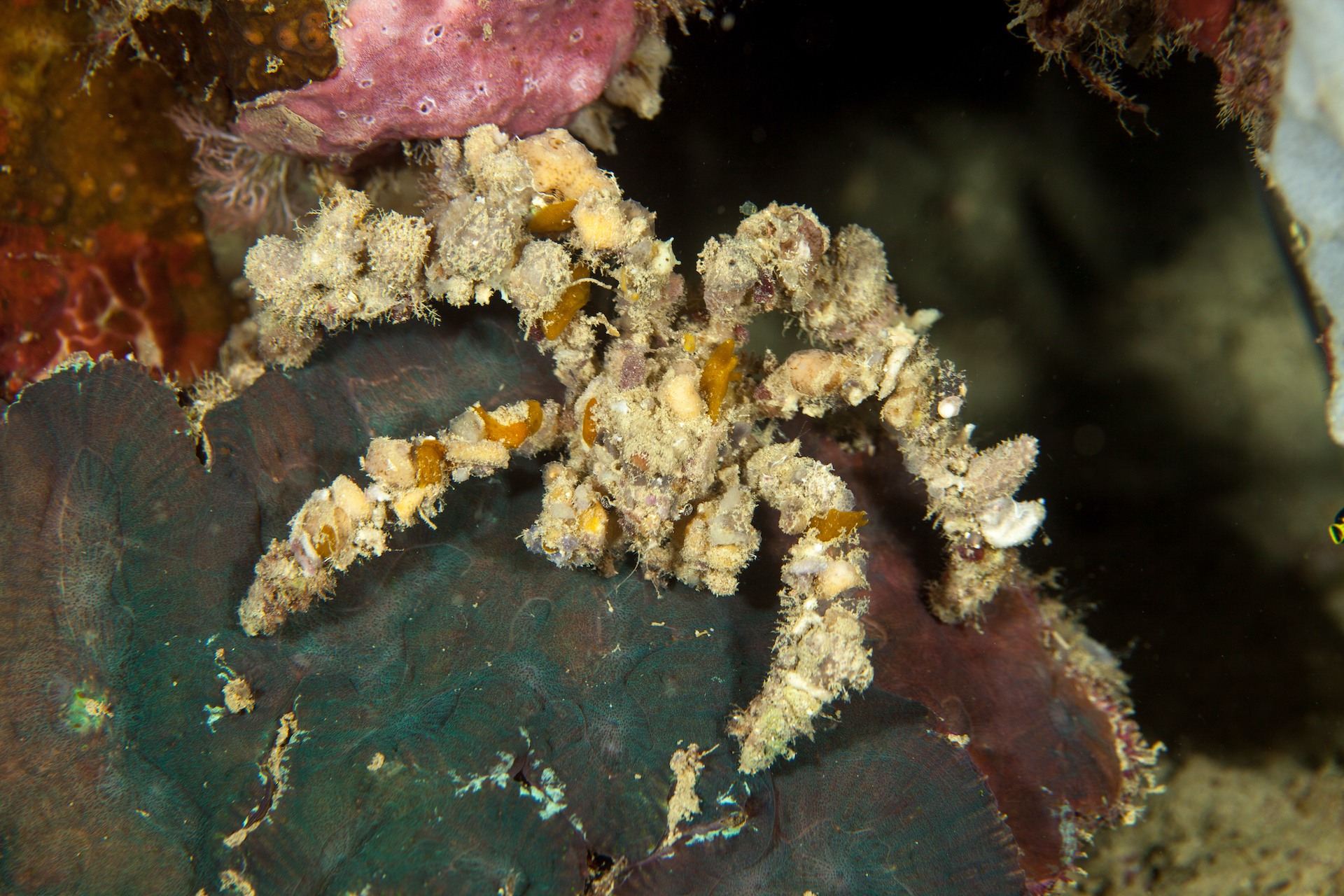
5. Sea Sponges and Decorator Crabs
One of the most fascinating partnerships in the ocean is that between decorator crabs and sea sponges. By attaching sea sponges to their shells, these crabs camouflage themselves, blending into their surroundings while also gaining some protection. In return, the sponges benefit from a free ride and increased access to food particles.

6. Coral and Zooxanthellae (Symbiotic Algae)
Zooxanthellae are tiny algae that live within the tissues of coral polyps, forming a mutualistic relationship between the two. The coral provides the algae with a safe habitat, access to sunlight, water, and carbon dioxide. In return, the zooxanthellae use these ingredients and photosynthesis to produce oxygen and sugars, which nourish the coral. Additionally, the algae help remove natural waste, further boosting the coral’s health.
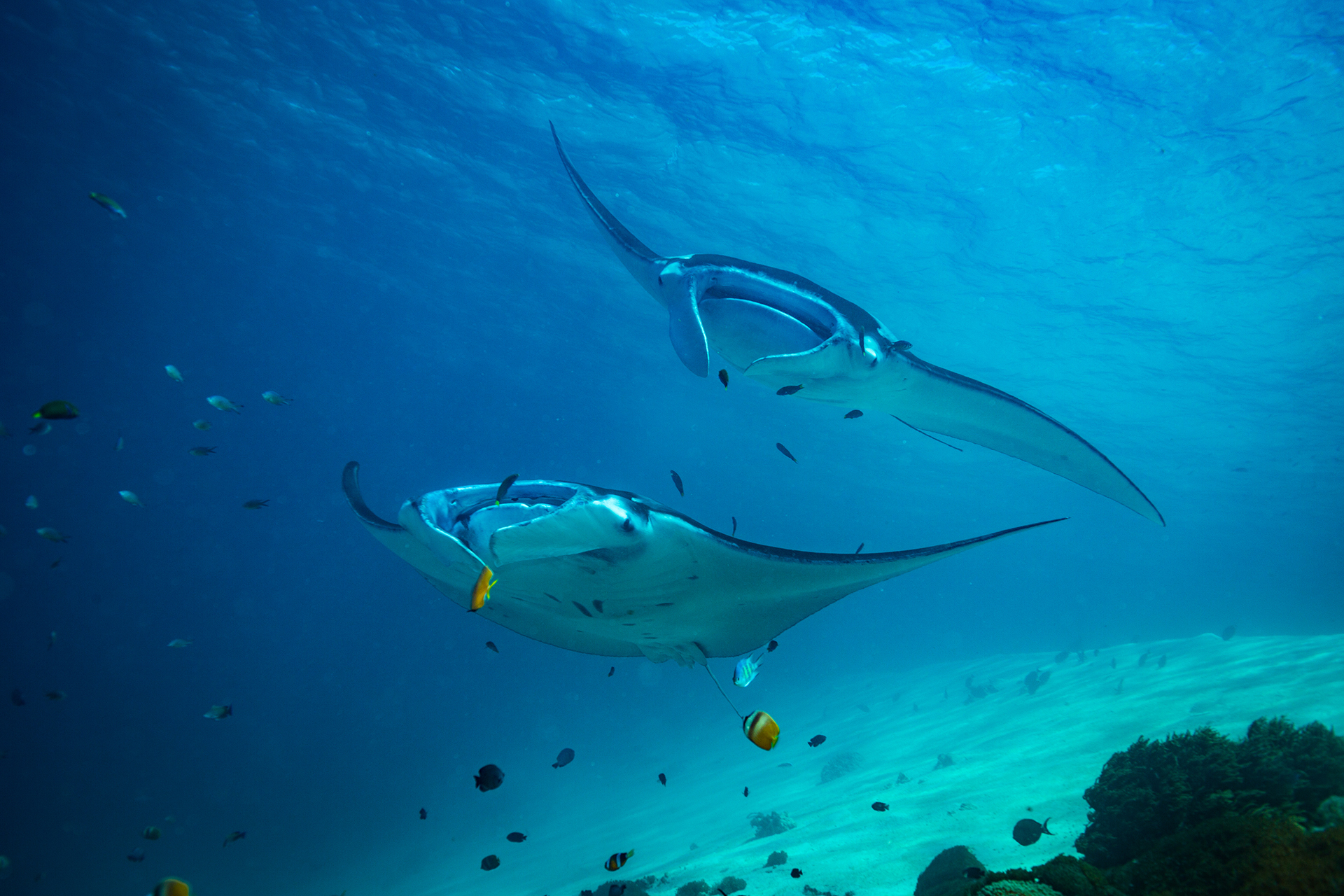
7. Manta Rays and Cleaner Fish
If you’ve ever explored in some of the best places to dive with manta rays, you’ve likely witnessed this mutualism example in action. As manta rays pass over the designated “cleaning stations,” cleaner fish remove dead skin and parasites from the ray’s skin. In this arrangement, the manta rays receive a free skin treatment, which keeps them clean and reduces the risk of infection, while the cleaner fish enjoy a steady food source.
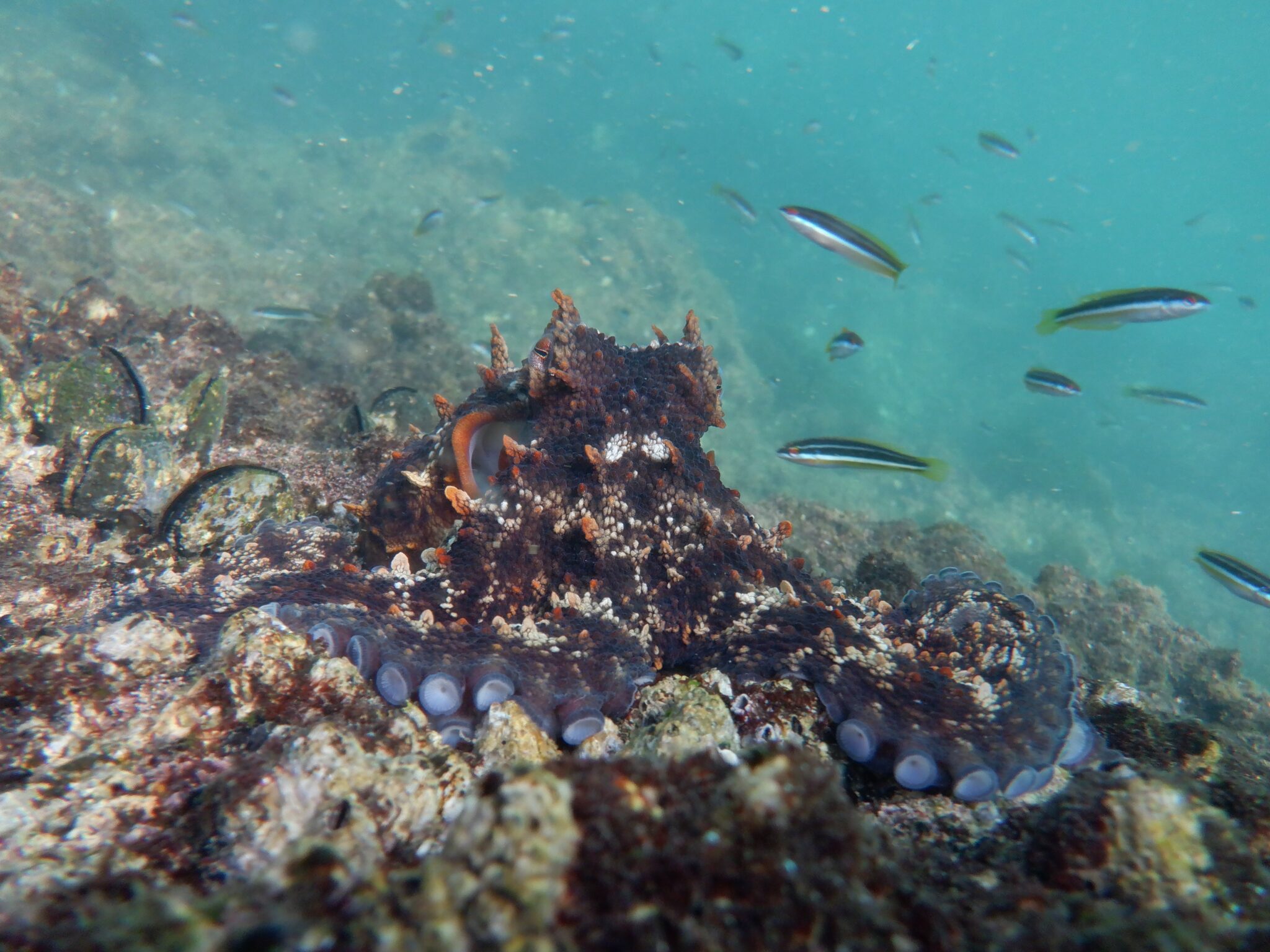
8. Octopus and Reef Fish
One of the most recently studied examples of mutualism can be found between octopuses and some fish species, including groupers and goatfish. While each species is undoubtedly capable on its own, together they form a more effective hunting team. By working cooperatively, the fish and octopus help scare out and catch prey that would otherwise be inaccessible. Groupers drive fish closer to reefs for octopus to catch, while the octopus flushes out fish the groupers cannot reach alone.
Feeling Inspired To See a Symbiotic Relationship?
Ready to gear up and spot one of these mutualism examples underwater? Fortunately, many of these fascinating pairings exist throughout tropical waters, in destinations like Egypt, Australia, and Thailand. Click below if you’re ready to book your trip, or for more underwater inspiration, check out this bucket list of must-see marine animals.

